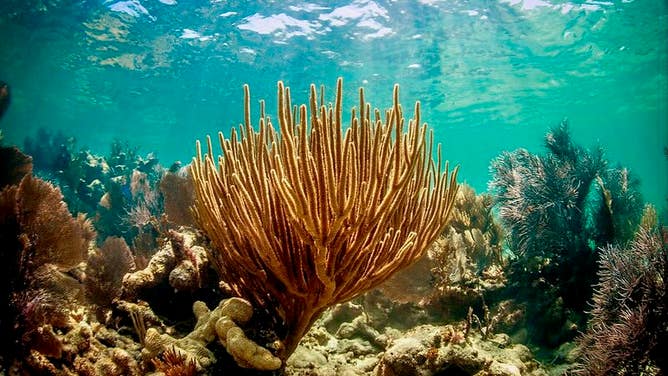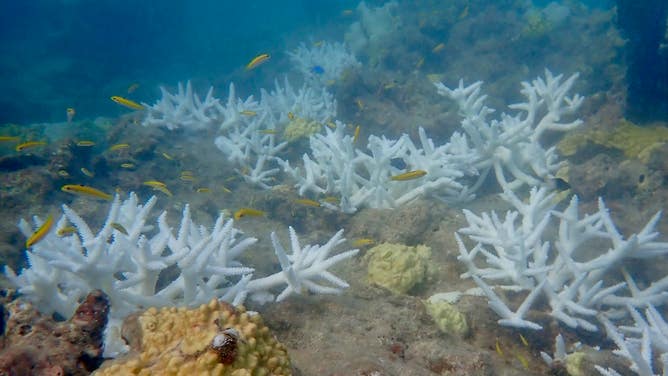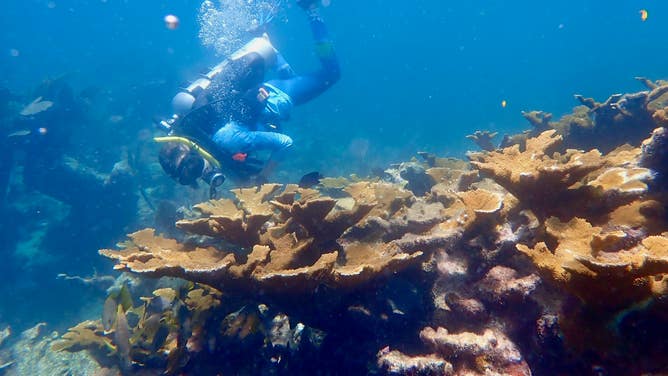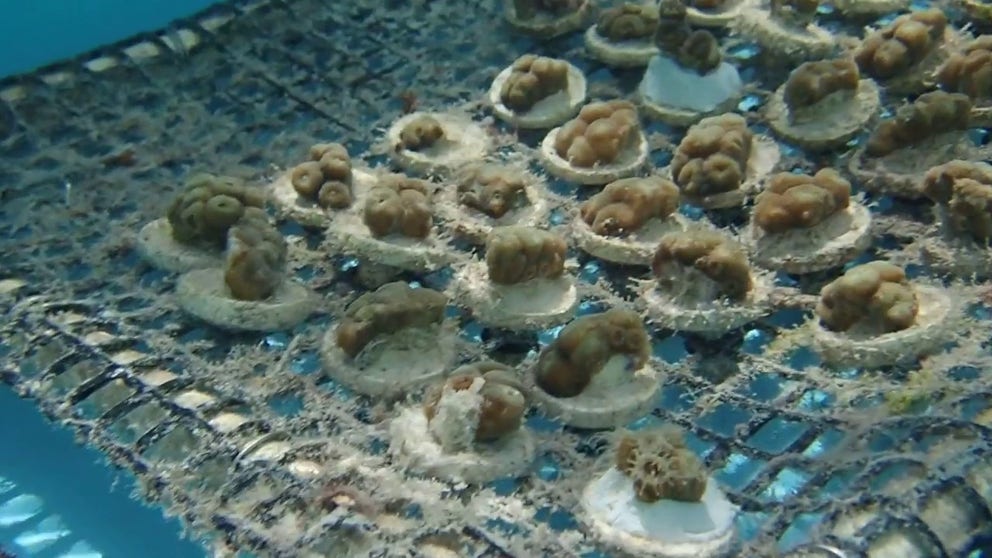Less than 22% of staghorn coral in Florida survived marine heat wave, scientists say
Florida’s coral reefs serve as a home to more than 6,000 species of plants and animals, provide a protective barrier from waves, storms and high tides and contribute $2.5 billion to the Florida economy, NOAA said.
FILE: The Keys Marine Laboratory hosts thousands of corals during bleaching event
File video from the Keys Marine Laboratory in the Florida Keys shows corals in temperature-controlled seawater tanks. KML hosted about 5,000 corals this summer during a mass bleaching event.
FLORIDA KEYS – Researchers completed an assessment Wednesday to see how record-high temperatures from the 2023 marine heat wave affected corals in the Florida Keys National Marine Sanctuary, according to NOAA.
They surveyed 64 locations at five of NOAA’s seven Mission: Iconic Reef sites in the marine sanctuary, NOAA said. The sites are part of an effort to restore corals in the area, which had declined by over 90% in the last 40 years due to hurricanes, bleaching, disease and heavy human use.
How a marine heat wave can impact coral

Coral at the Florida Keys National Marine Sanctuary.
(NOAA Florida Keys National Marine Sanctuary / NOAA)
Another recent stressor occurred in the summer of 2023, when corals in the Florida Keys experienced the hottest ocean temperatures on record and the longest marine heat wave in 30 years, according to NOAA.
Extreme sea temperatures, such as a 2-degree increase in temperature, can cause coral to lose the beneficial algae that they house. The algae provide the coral with nutrients and their iconic color. Without the algae, coral becomes less healthy and turns white in a process known as "bleaching."
Because of the impact of extreme heat, researchers from the Mission: Iconic Reefs program and partners from Mote Marine Laboratory & Aquarium and the Coral Restoration Foundation conducted their assessment of the coral.
‘SHOCKING’: FLORIDA CORAL REEF FOUND COMPLETELY BLEACHED AS MARINE HEAT WAVE CONTINUES
Findings of the assessment

Small yellow fish swim around bleached coral.
(NOAA Florida Keys National Marine Sanctuary / NOAA)
Preliminary findings show that less than 22% of about 1,500 of staghorn coral survived the heat wave, NOAA said. Additionally, living staghorn coral could only be found in the two northernmost reefs of the five reefs surveyed.
Elkhorn coral was only found at three of the five sites.
NOAA noted that neither staghorn nor elkhorn corals were found alive at sample areas surveyed at Looe Key Reef in the lower Florida Keys.
These findings, along with the rest of the data from the assessment, are being reviewed and analyzed, NOAA said.
AFTER ‘FIRST OF ITS KIND’ HEAT WAVE, FLORIDA CORALS BEGIN RETURN TO OCEAN
The role of coral reefs in Florida

A driver swims by coral.
(NOAA Florida Keys National Marine Sanctuary / NOAA)
Florida’s coral reef is the world's third-largest coral reef system, according to NOAA.
They added that the reef stretches over 255 continuous miles, serving as a home to more than 6,000 species of plants and animals.
The reefs also provide a protective barrier from waves, storms and high tides, and contribute about $2.5 billion to the Florida economy.
